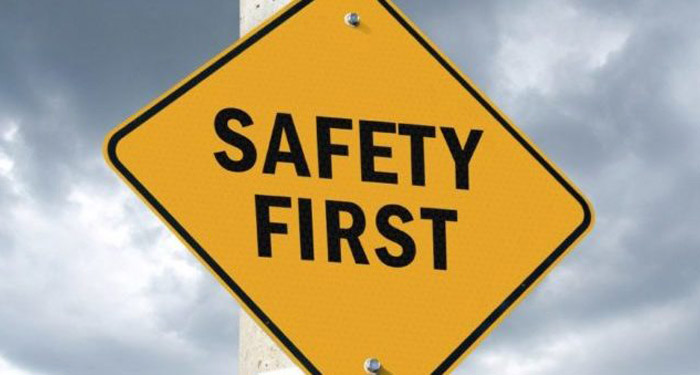Too many shipboard safety drills have become meaningless reminders of procedure. Capt. Yves Vandenborn says good drills should reflect the roller-coaster ride of real-life emergencies.
The problem with many safety drills today is that nobody takes them seriously. This is mainly because the building fire drills and pre-flight safety briefings we regularly experience simply fail to convey the terrifying reality of a towering inferno or imminent crash landing.
The same can often be said for safety drills on ships. Crews regularly go through the motions of unwinding fire hoses or lowering lifeboats on quiet days at sea, but does this really prepare them for a cargo explosion in the middle of the night?
Worse still, many recorded safety drills never actually take place. Fake drill reports are commonplace, though fake entries can usually be spotted by their identical timings. There are also obstacles to certain drills, such as reluctance by crews and objections by ports to lowering lifeboats. Furthermore, drills for newer technology-related risks, such as loss or jamming of satellite positioning or failure of electronic chart display and information systems, are rarely undertaken.
How can we ensure seafarers are better prepared to deal with and respond effectively to maritime accidents and emergencies in the real world?
First, we can introduce variety, so that no two drills on a voyage are the same. They should have different scenarios and be held in different conditions and at different times of day. This will keep the crew engaged and ensure that each of them takes away a bit of new information from every experience.
As Captain Chesley Sullenberger said after safely ditching his powerless Airbus A320 into the River Hudson in 2009, allowing all 155 passengers to escape unhurt,
for 42 years, I’ve been making small, regular deposits in this bank of experience, education and training…on January 15 the balance was sufficient so that I could make a very large withdrawal.
Making drills more realistic is also important. While we cannot keep setting an operational ship on fire, we can regularly fill its passageways with smoke, simulate power cuts, replicate the sound of explosions and get crewmembers to act as casualties. We can also do this at night in a gale.
The scenarios need to be genuinely thrilling and challenging, forcing crewmembers to solve problems under pressure. The standard rostering of officers on drills should also be challenged: for example, the third officer might be a more skilled firefighter than the first officer, so he or she should lead the first response in fire drills.
It is vital that crewmembers actually wear and/or operate all the protective and safety equipment needed for a real emergency. This is particularly relevant for lifeboat drills, in which many crewmembers have been killed or injured due to incorrect use of release hooks. Ships should have a mock-up of their release mechanism on board so all crewmembers can be properly trained on its use before attempting a drill. Moreover, once a lifeboat is afloat, it should be taken for a test drive.
Finally, in addition to whole-crew drills for physical emergencies such as security, fire, pollution, enclosed space casualties and abandon ship, the bridge team should get their own navigational drills. Masters should prepare a series of navigational scenarios to surprise duty officers during traffic-free parts of the passage. These could include simulated failures of the steering, main engine or navigation equipment, or the need for rapid manoeuvres such a Williamson turn for man-overboard.
In line with the ‘Safety II’ model set out by Erik Hollnagel five years ago (Hollnagel, 2014) now widely accepted by safety professionals worldwide, the aim of shipboard safety drills should be to build the resilience and ability to adapt amongst the crew. Only then will they be able to make good, instinctive decisions in the highly stressful, fast-moving and unpredictable situations that can happen at sea.
Shipowners and operators should therefore urgently review their shipboard drills, finding ways to transform them from gentle reminders of procedure into truly memorable and engaging learning experiences. We need to put the thrill back into drills.
It is vital that crewmembers actually wear and/or operate all the protective and safety equipment needed for a real emergency. The aim of shipboard safety drills should be to build the resilience.
Capt. Yves Vandenborn, Director of Loss Prevention of The Standard Club
The views presented hereabove are only those of the author and not necessarily those of SAFETY4SEA and are for information sharing and discussion purposes only.





























































Indeed a great article on shipboard drills. Masters can pursue these suggestions on realistic drills , if the Company reinforces the Master’s decisions to conduct and test various emergency procedures in as realistic conditions as possible. At times, this may delay the ship or cause minor injuries. It is in the latter case Company support is most essential.